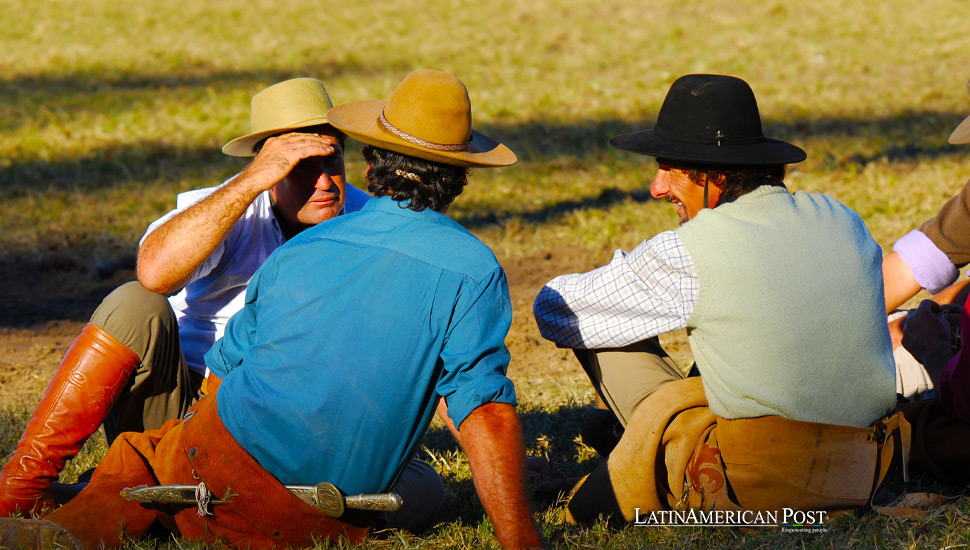The Gauchos of Argentina: Preserving the Cowboy Lifestyle in the Modern Age

Amid Argentina’s rapid modernization, the iconic gauchos steadfastly uphold their centuries-old traditions, embodying the spirit of freedom and resilience. This feature delves into the captivating world of the gauchos, exploring their profound impact on Argentina’s national identity and how they navigate the challenges of preserving their heritage in today’s globalized society.
The image of the skilled horseman, his silhouette etched against the vast Argentine pampas, evokes the very essence of Argentina. These are the gauchos, descendants of European settlers and indigenous peoples who emerged in the 18th century. Their nomadic life, centered around cattle ranching, shaped Argentina’s physical landscape and its cultural soul. While modernization threatens their traditional way of life, gauchos continue to uphold their unique cultural heritage, adapting to contemporary challenges with the same resilience that defined their ancestors.
Historical Background
The 18th century saw the rise of the gauchos on the pampas. Unlike their North American counterparts, who often worked for large ranches, gauchos were primarily independent, living and working on their terms. They honed exceptional horsemanship skills, becoming legendary for their ability to handle wild horses and navigate the vast grasslands easily. Their deep understanding of the land and its resources proved invaluable during the War of Independence. Gauchos, skilled fighters known for their agility and horsemanship, played a crucial role in securing Argentina’s freedom from Spanish rule. One such gaucho, Juan Facundo Quiroga, became a folk hero, his legend echoing through generations.
Cultural Significance
Gauchos have become deeply woven into the fabric of Argentine culture. Their image is celebrated in literature, like the epic poem “Martín Fierro” by José Hernández, which narrates the struggles and triumphs of a gaucho on the pampas. Their music, characterized by the melancholic sounds of the guitar and the lively rhythms of the “chamamé,” resonates with Argentinians across generations. Artworks showcase the gaucho’s unique aesthetic, from paintings by renowned artist Florencio Molina Campos to intricate silver gaucho attire embellishments. Traditional attire, like the iconic “bombachas” (baggy trousers) and “boina” (beret), is still worn with pride during festivals and celebrations. At the same time, customs like mate drinking, a social ritual fostering connection and community, remain deeply ingrained in Argentine culture.
Gaucho Lifestyle Today
Modern-day gauchos, often referred to as “gauchos modernos,” carry on the legacy of their ancestors. They are not simply relics of the past but living testaments to a culture adapting to the 21st century. In the heart of Estancia El Ombú, a traditional ranch in Buenos Aires province, gaucho Facundo Flores demonstrates his expertise, expertly maneuvering his horse while herding cattle. Like other gauchos, he incorporates sustainable practices like rotational grazing to preserve the pampas ecosystem.
Challenges and Adaptations
While gauchos remain deeply rooted in their traditions, technological advancements and globalization pose significant challenges. Modern ranching methods threaten the need for traditional cattle herding skills, and the allure of urban life draws younger generations away from the pampas. However, gauchos display remarkable adaptability. Estancia La Fidelidad, a traditional ranch in Patagonia, has embraced ecotourism, offering visitors an immersive experience of gaucho culture while generating income that supports their way of life. Like Sofia Wright, a young woman raised on a ranch in Mendoza, Gauchos utilizes social media platforms to connect with a global audience, promoting gaucho culture and traditions beyond geographical boundaries.
Preservation Efforts
Concerted efforts are underway to safeguard gaucho culture. The “Fiesta Nacional de la Tradición Gaucha” in San Antonio de Areco, Argentina, attracts thousands of visitors yearly, showcasing traditional gaucho skills, music, and dance. Museums like the Museo Gaucho y de las Payasadas (“Museum of Gauchos and Jokes”) in Buenos Aires house historical artifacts and exhibits that educate visitors about gaucho life and history. Educational programs like those offered by the Fundación Gauchos del Sur (“Foundation of Southern Gauchos”) work with schools to connect younger generations with their cultural heritage through interactive workshops and educational materials.
Impact on National Identity
Gauchos serve as a powerful symbol of Argentina’s national identity. Their values of self-reliance, resilience, and respect for the land resonate deeply with Argentinians, fostering a sense of shared heritage and pride. In times of national struggle, gauchos often become symbols of hope and perseverance. When Argentina faced economic hardship in 2001, the image of the gaucho, representing resilience and self-sufficiency, resonated strongly with the nation. Furthermore, gauchos contribute significantly to Argentina’s international image, attracting tourists interested in experiencing their unique culture and way of life. Estancias like Estancia el Puesto, welcoming visitors eager to witness the gaucho way of life firsthand, exemplify this contribution. These estancias generate economic benefits and serve as cultural ambassadors, fostering international appreciation for Argentina’s rich heritage. Ultimately, the gauchos stand as a testament to Argentina’s enduring spirit, a reminder of its historical struggles and triumphs, and a source of inspiration for future generations. Their legacy transcends the pampas, serving as a powerful symbol of national identity that continues to resonate with Argentinians and the world alike.
The Gaucho Spirit in the Modern World
The gaucho spirit offers valuable lessons in a world increasingly driven by technology and rapid change. Their connection to nature, self-reliance, and unwavering commitment to preserving their traditions provide valuable insights into sustainable living and cultural preservation in modernity. While the future of the gaucho way of life remains intertwined with the challenges of the 21st century, their unwavering spirit suggests that their legacy will continue to inspire future generations.
Also read: Cameron’s Plan to Visit Falkland Islands Highlights Enduring Tensions with Argentina and Regional Implications
The enduring appeal of the gauchos lies not only in their historical significance but also in their enduring relevance to contemporary Argentina. Their ability to adapt to changing times while preserving their unique heritage provides a powerful testament to human resilience and the enduring value of cultural traditions. As Argentina navigates the complexities of the modern world, the gauchos remain a source of national pride and a symbol of the enduring human spirit. Their story serves as a reminder of the importance of cultural preservation, the value of self-reliance, and the enduring connection between humanity and nature. The gauchos, forever etched against the vast pampas, continue to inspire with their spirit, resilience, and unwavering commitment to their unique way of life.





